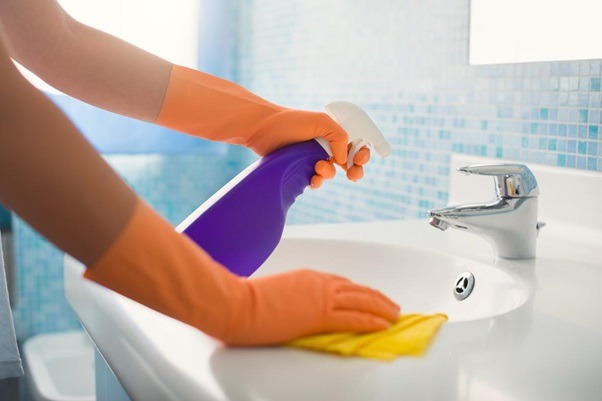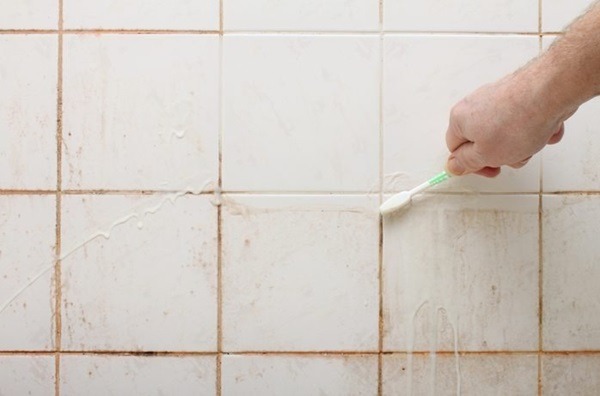I remember being young and naïve. I suppose this could refer to any number of reckless behaviours from my youth, but in this scenario, I’m referring to my years mistakenly identifying pink mold as your basic run-of-the-mill soap scum.
Our bathroom was always stocked with pink cakes of soap – one in the shower and another in the soap dish by the bathroom sink. So when I’d see a ring of pink stuff around the drain or in the shower, I assumed it was soap residue. Maybe my parents did too! The soap and mold growth are both pink, so it makes sense, right?
Mold thrives in moist environments, which is something I’ve since discovered. And even though it’s the basis for life-saving penicillin, there’s certainly nothing appealing (or healthy) about lingering bacteria growth on the sink, by the drain or plastered across the shower walls.
That’s why I’ve put together this guide to help make homeowners and tenants aware of the potential dangers and advise on how to get rid of pink mold for good.
So, causes pink mold in bathroom sinks? Let’s find out!
What is Pink Mold?
Pink mold is not actually mold, but a form of bacteria growth. Serratia marcescens is the scientific name for this species of allergenic biofilm that’s found in areas of high humidity like the bathroom. It’s a waterborne bacteria caused by soap and shampoo residue and bodily fluids on both hard and soft surfaces.
It presents as pink or red and is often found on tile grout, shower curtains, shower chairs, the sink and shower drains and other damp areas, including the private toilet in your precious ensuite bathroom.
It’s not uncommon for mold spores to be found in the air, but the moisture buildup encourages bacteria colonies to sit and form colonies in your home.
Serratia marcescens is not to be confused with another form of mold growth called Aureobasidium pullaria. This is a more common form of mold found on ceilings and windows. It too can possess a pink hue, but you will often notice a darker grey, brown or black colour.
Is Pink Mold Dangerous?
Common pink mold is not considered deadly, but there are certainly health concerns for those exposed to mold over the long term. Spores can be ingested and also cause infection through open wounds. In addition, they can cause an allergic reaction, and the negative effects could be worse for those with compromised immune systems.
Pink mold exposure can cause the following health problems:
- Urinary tract infections
- Bladder infections
- Blood poisoning
- Breathing difficulties
- Headaches
- Sore throat
- Skin irritations
- Red eyes
Pets can also experience many of these symptoms.
Pink mold doesn’t give off the toxic fumes of the notorious black mold, but it’s still a highly undesirable substance. It’s best removed quickly and while wearing gloves and a face mask.
How to Remove Pink Mold
The good news is that pink mold can be removed with a few cleaning products and some good old fashioned elbow grease.
Avoid bleach. I know it seems like the obvious choice, but many experts will tell you that it loses potency quickly, and bleach is ineffective against porous materials like bacterial growth. What’s worse is the bleach can remove the pink or red pigment giving the impression that the mold is gone when it’s still thriving away on your bathroom amenities. Bleach can also corrode grout, loosening the surrounding tiles.
You can purchase a purpose-made cleaning product for mold removal. Just avoid the ones that contain a bleach solution.
The easiest way to remove mold is by mixing a solution of 80 per cent white vinegar and 20 per cent water.
Wear protective gear, including a mask, goggles and gloves. Put some vinegar solution in a spray bottle and direct it towards the affected area. Alternatively, apply the solution to a microfibre cloth and make direct contact with the pink mold to cover the bacteria – while always wearing gloves.
Leave the solution for a few minutes before removing it with a soft bristle brush. Then clean the area with warm water to remove any leftover traces of the mold.
This simple yet effective method works wonders for removing the undesirable bacteria, but different steps will need to be taken to prevent pink mold from returning.
An exhaust fan is a great way to remove moisture from a room, or opening a window can also help. You may need to take further steps to improve the insulation and weatherproofing of the home if it needs some repairs.
You can also seek professional help with mold remediation, but it can be an expensive process depending on the contamination level and the size of the affected areas. If you notice pink mold in the shower or bathroom sink, give the white vinegar/scrub brush solution a go. It only costs a couple of dollars to get all the necessary gear.
If the problem persists, contact a restoration company to handle the pink mold removal.


